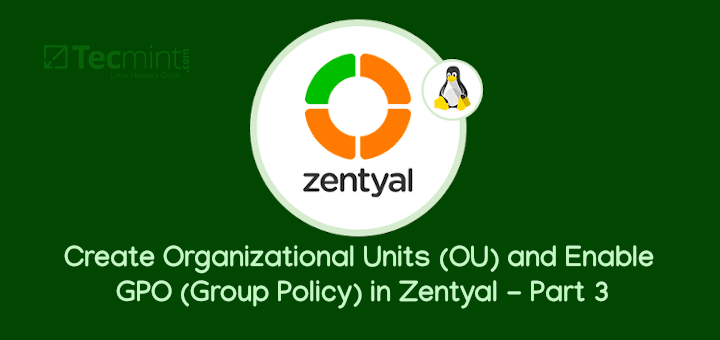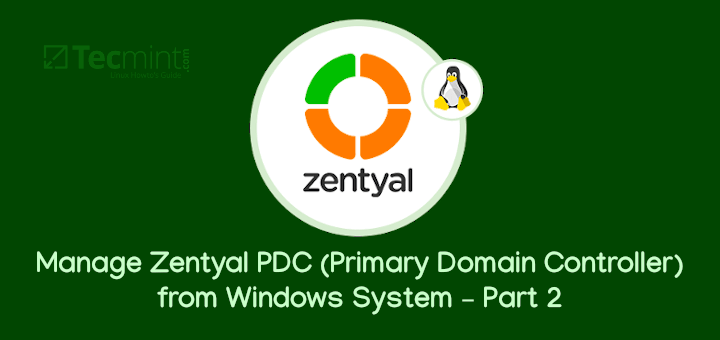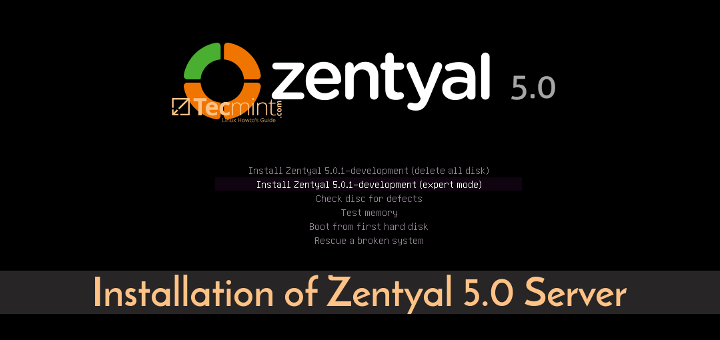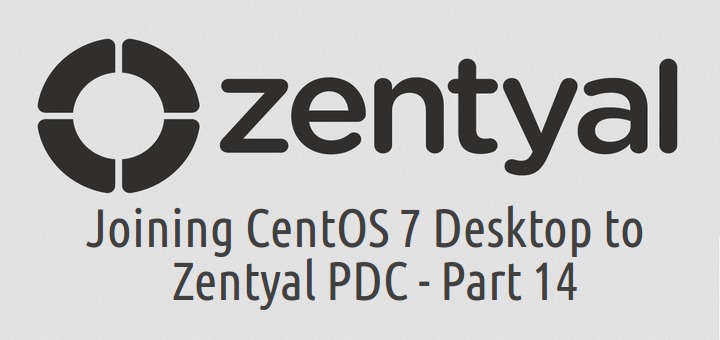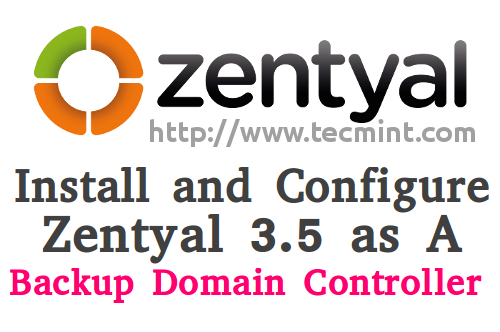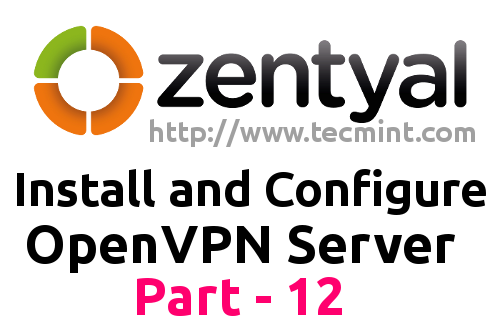This series will be titled Preparation for the setting up and managing Zentyal as PDC (Primary Domain Controller) through Parts 1-14 and covers the following topics.
This tutorial will demonstrate how to use a Linux distribution, Zentyal, as a PDC ( Primary Domain Controller ) and integrate a Windows-based system in this Domain Controller.
Requirements:
- Download Zentyal Server Development Edition 7.0.
- A different computer that runs a Windows-based system to be integrated into the domain.
- The domain used is a fictional one and runs on a local network only: “tecmint.com”.
Step 1: Installing Zentyal Server
1. Choose language.
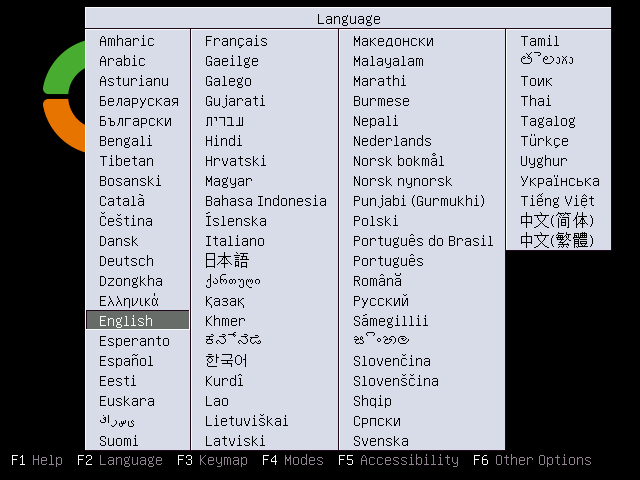
2. Choose an expert mode.
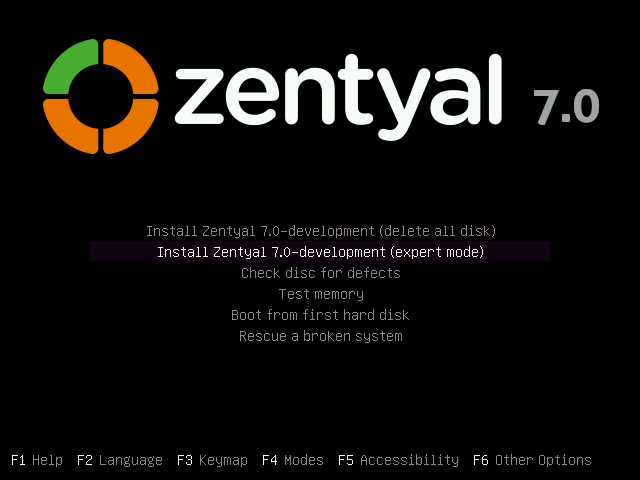
3. Again choose your language for the installation process.
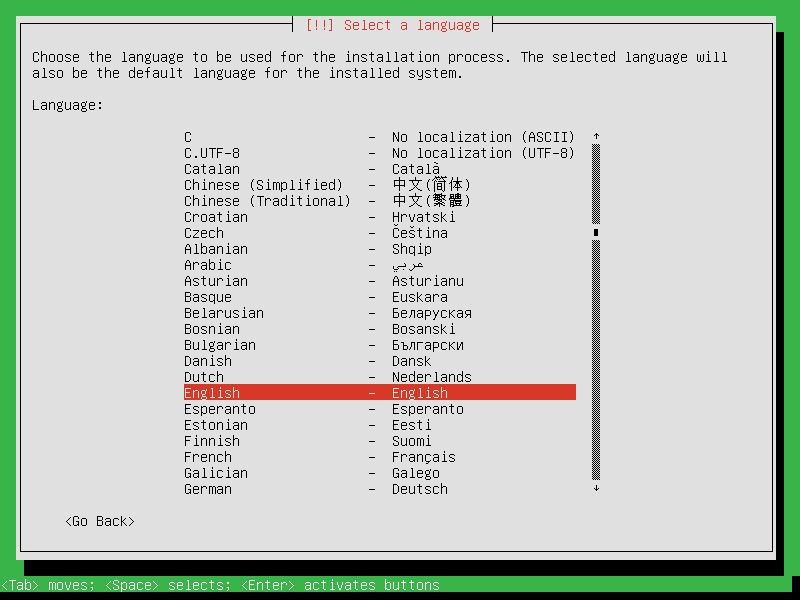
4. Choose your location. If your country is not listed in the default options choose Other, then select your continent and country: I’m in India so I choose India.
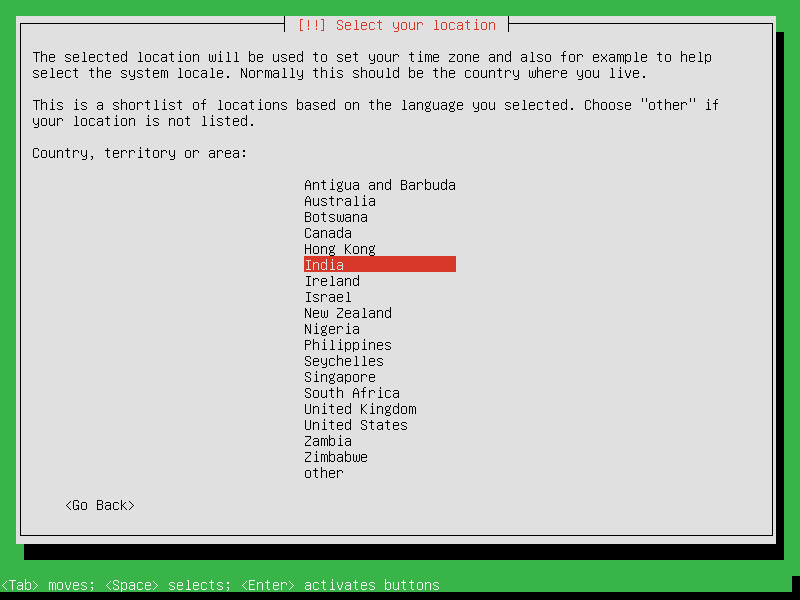
5. Next configure your keyboard: I choose the English US keyboard.
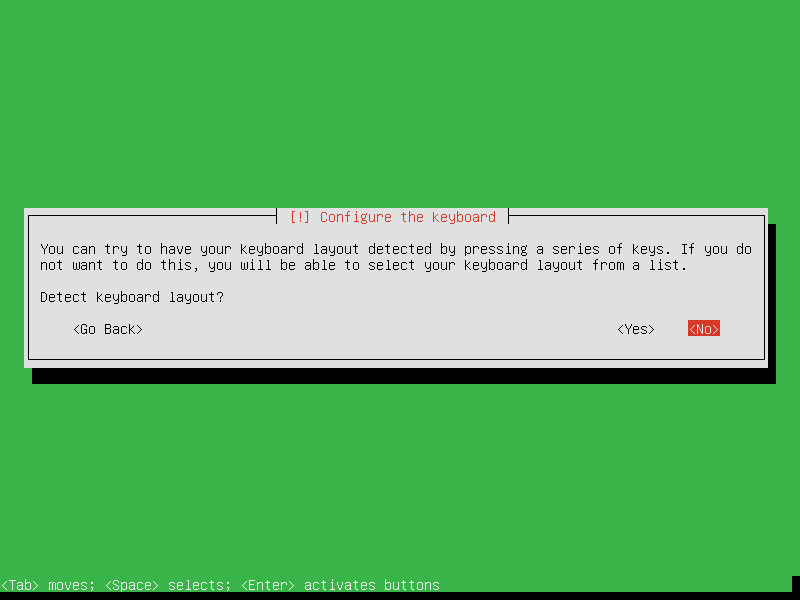
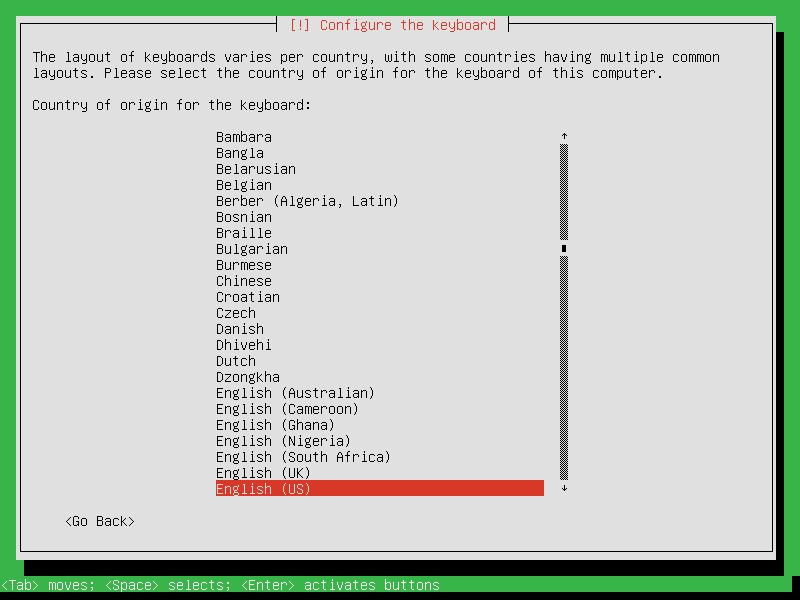
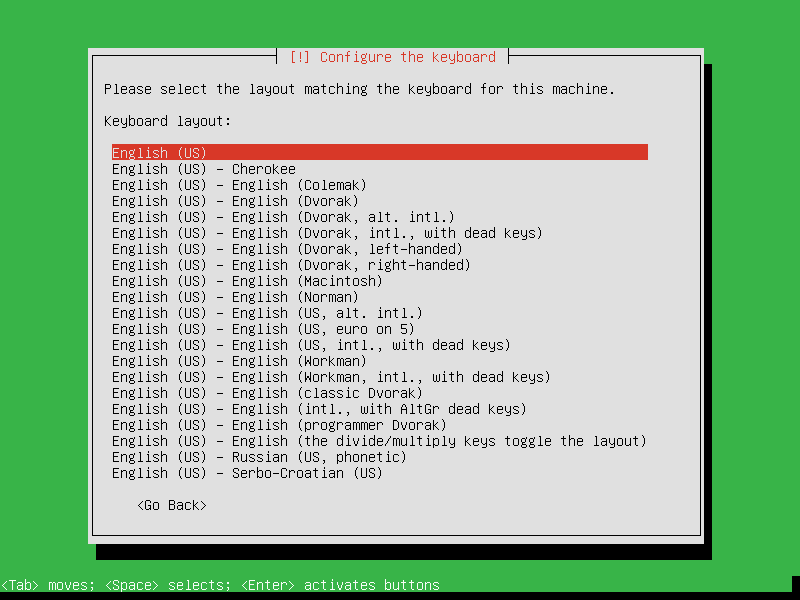
6. Next the installer will load components needed for configuring the system.
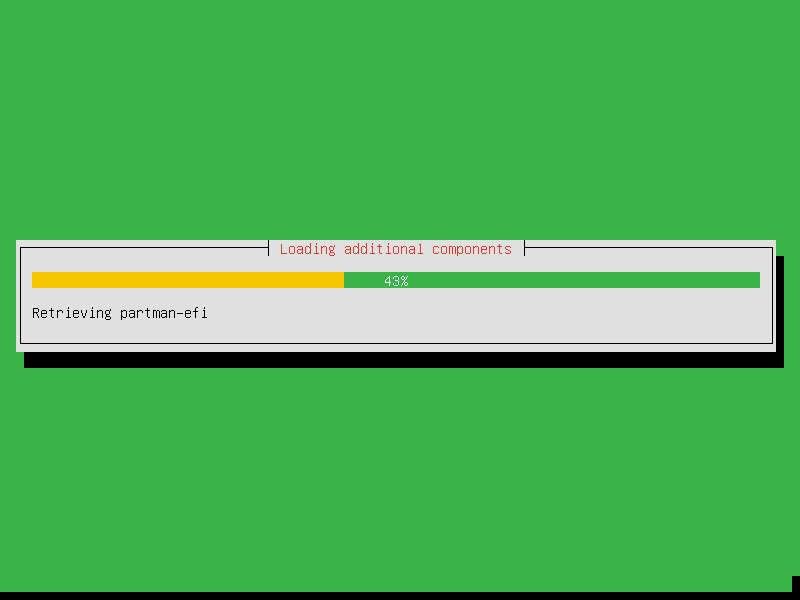
7. The next installer stage is to set the hostname for your system. You should enter here your FQDN. This is a test server so I choose “pdc.tecmint.com” ( Be aware that “pdc” will be this server and “tecmint.com” would be your domain for Active Directory ).
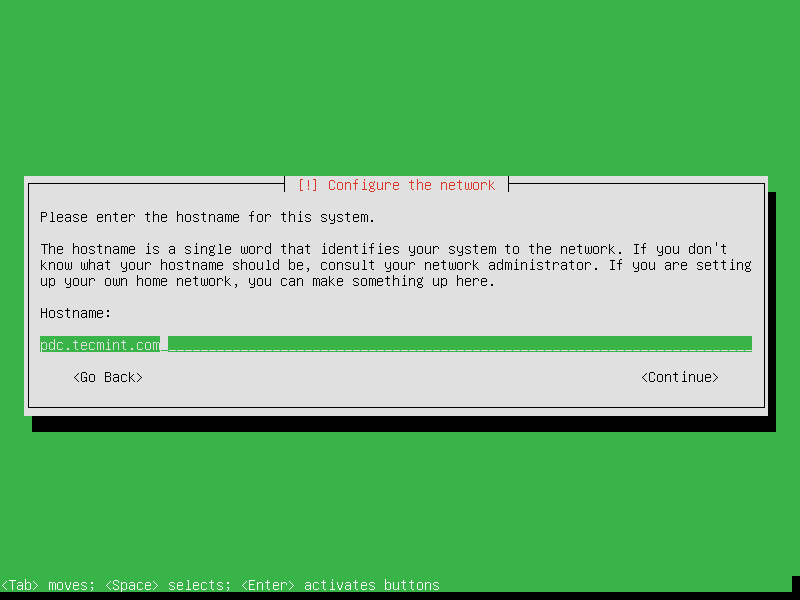
8. Next choose a user for system administration ( This will be the privileged user with root powers – sudo ) not the user domain controller.
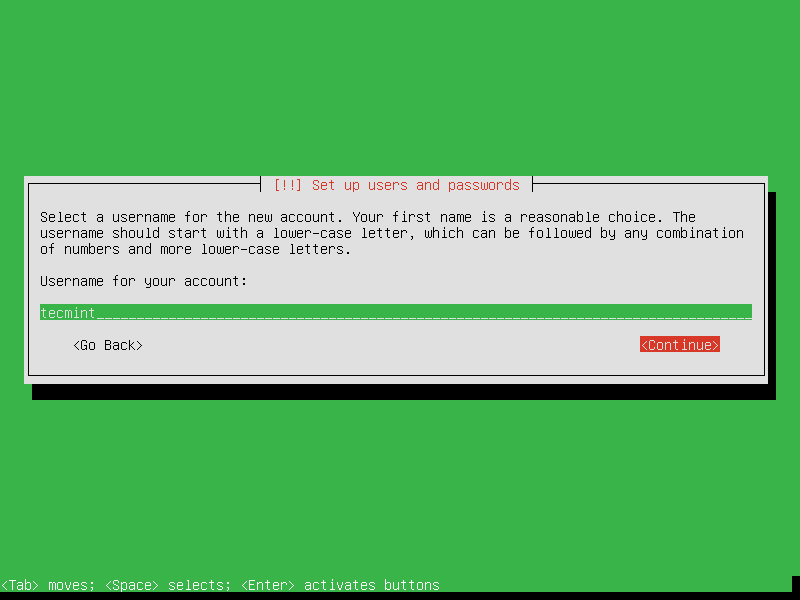
9. Next type a password for the sudo user. Choose a strong one ( 9 characters at least upper&lower&numerical&special ). Here I choose a simple one because is a test server.
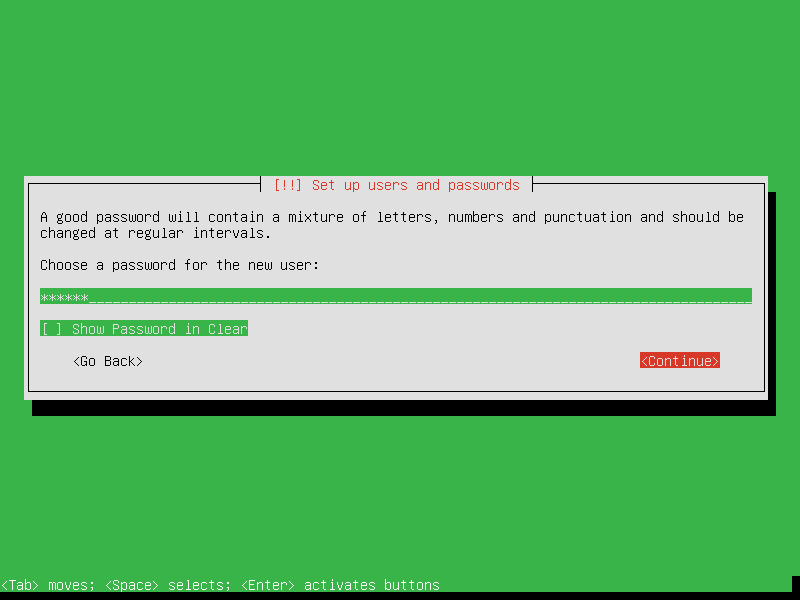
10. Next it will ask you to re-enter your password and if you choose a weak one the installer will warn you about this fact. So select Yes and hit enter.
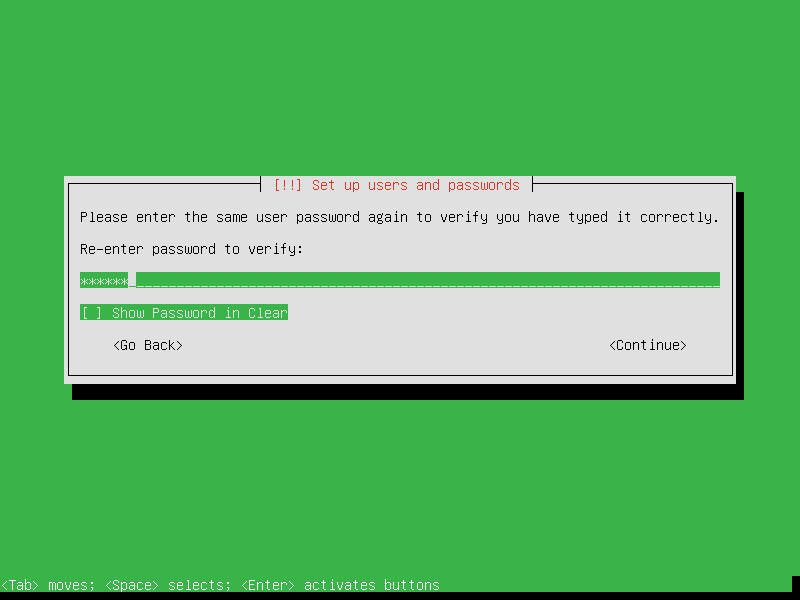
11. Next step is configuring your time. If your system is connected to the Internet the installer will automatically detect your time zone. So press Yes if your time setting is the correct one.
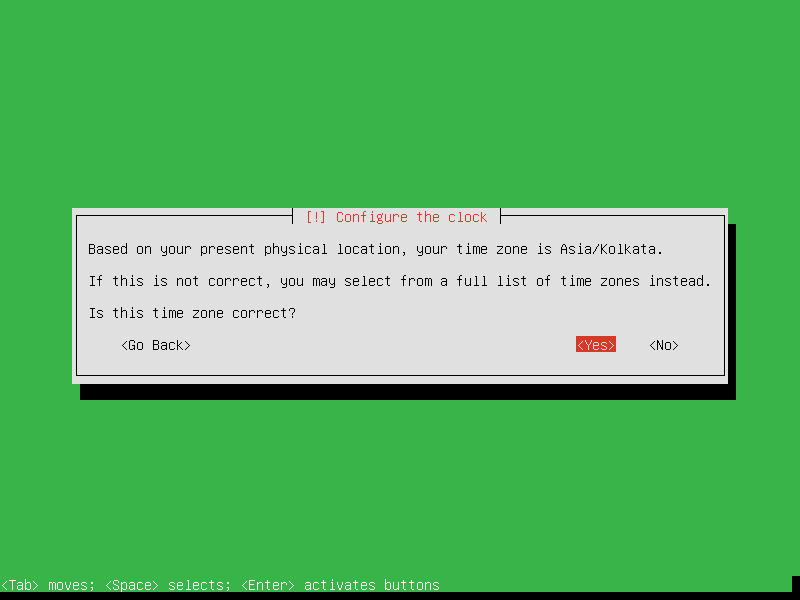
12. Next screen is Partition Disks where you have four alternatives like in the images below. For better control over your system partition choose Manual and hit Enter.
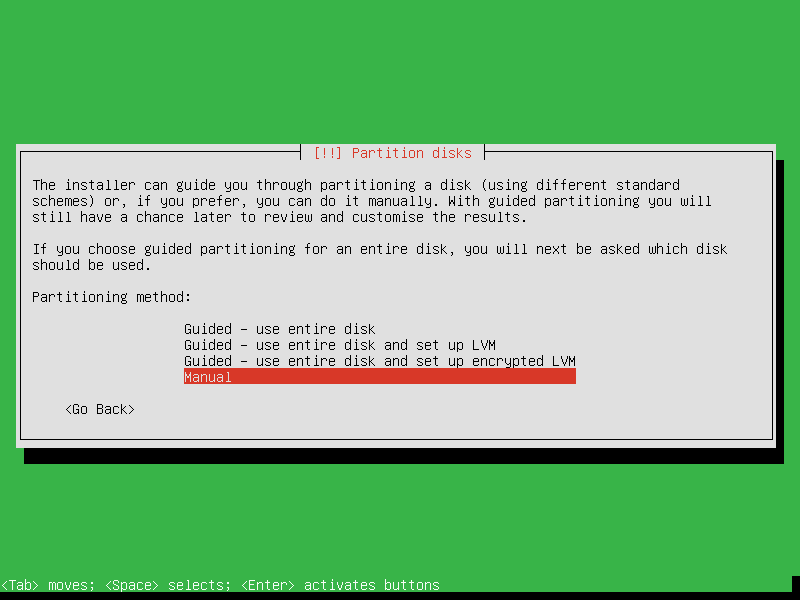
13. Choose your HDD. In this setup, I’m on a Virtualbox virtual disk.
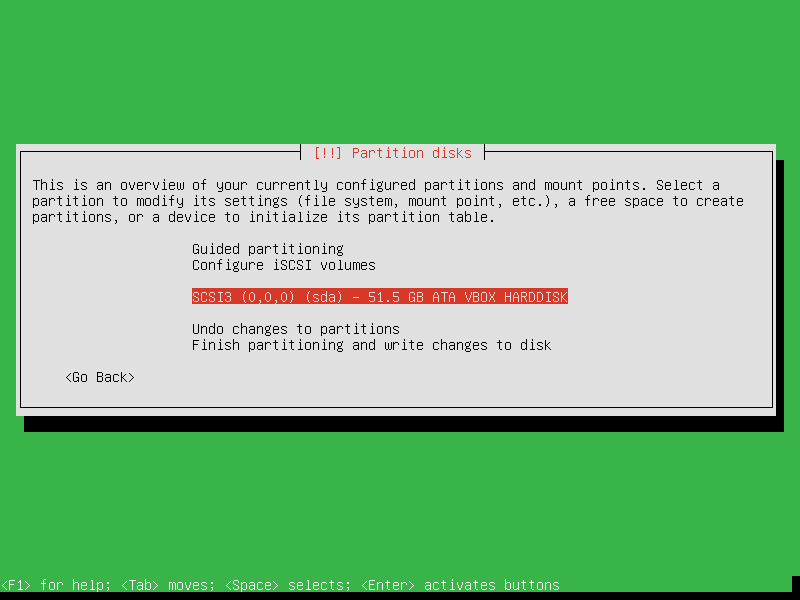
14. Next choose Yes and hit Enter.
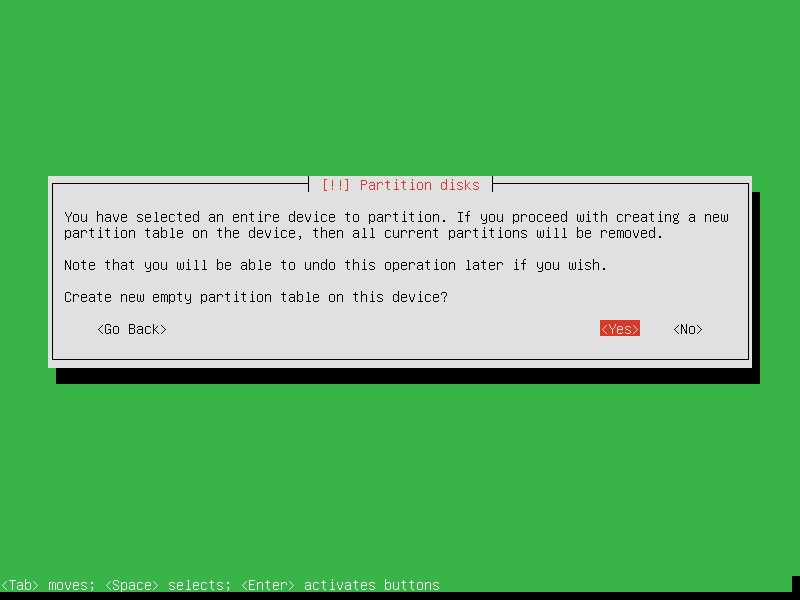
15. Configuring the Hard Disk Partitions. My HDD system config is the following.
- 40 GB for
/Partition ext4 - 1 GB for swap area
- 10 GB for
/homeext4
On a real server, you should allocate more space for all of the partitions, even create a new one for /var partition. Now is the time to create a partition. Follow the steps. Choose Free space.
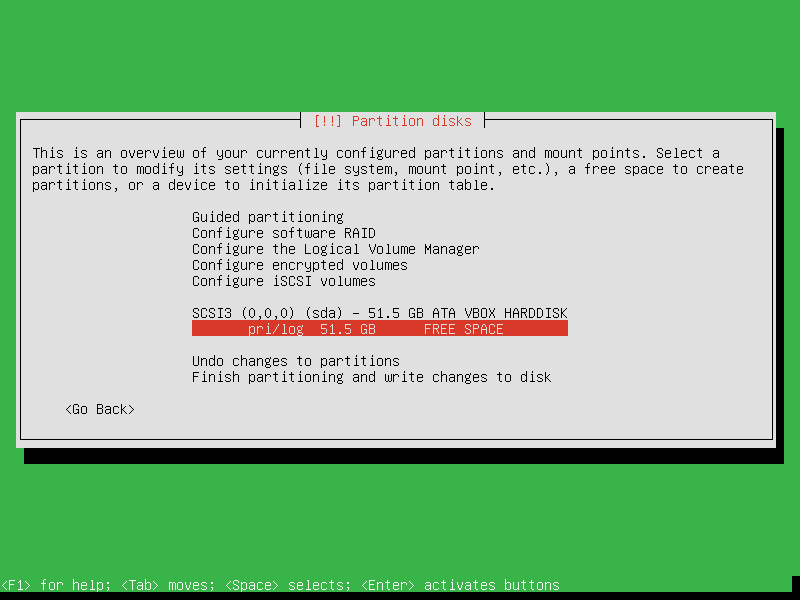
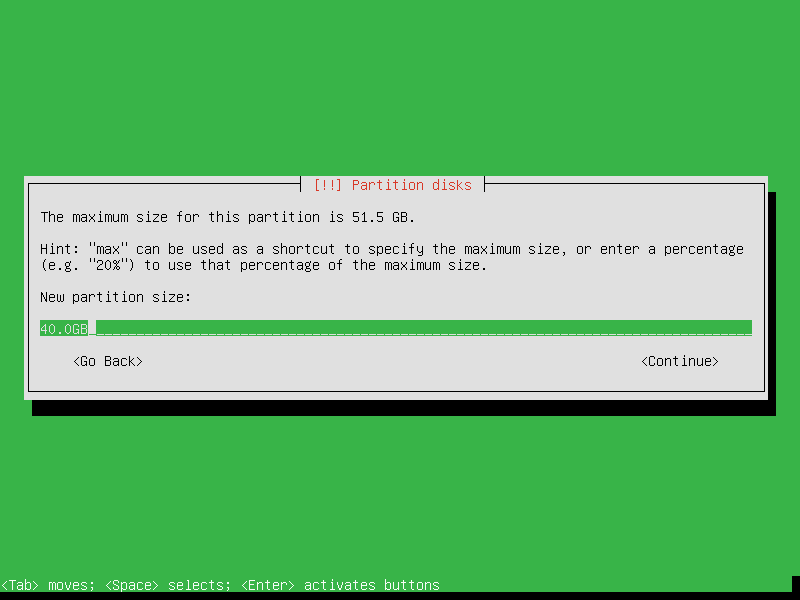
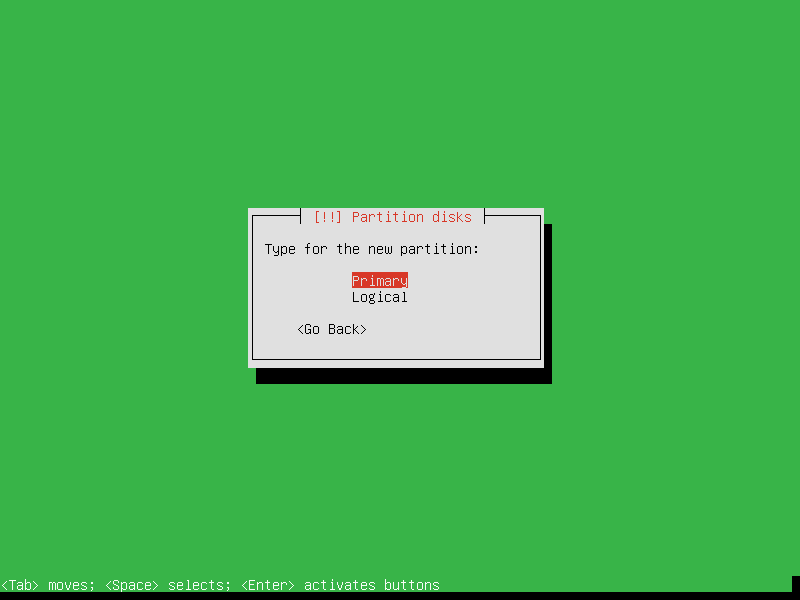
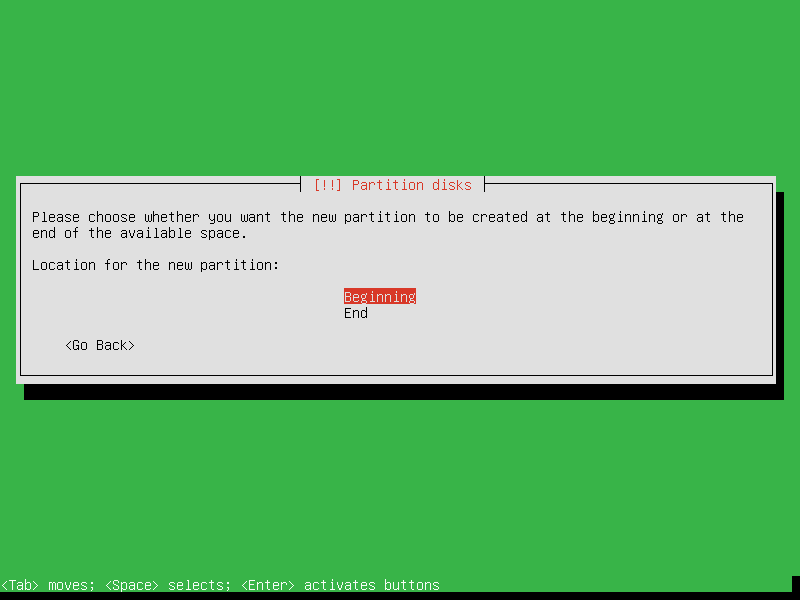
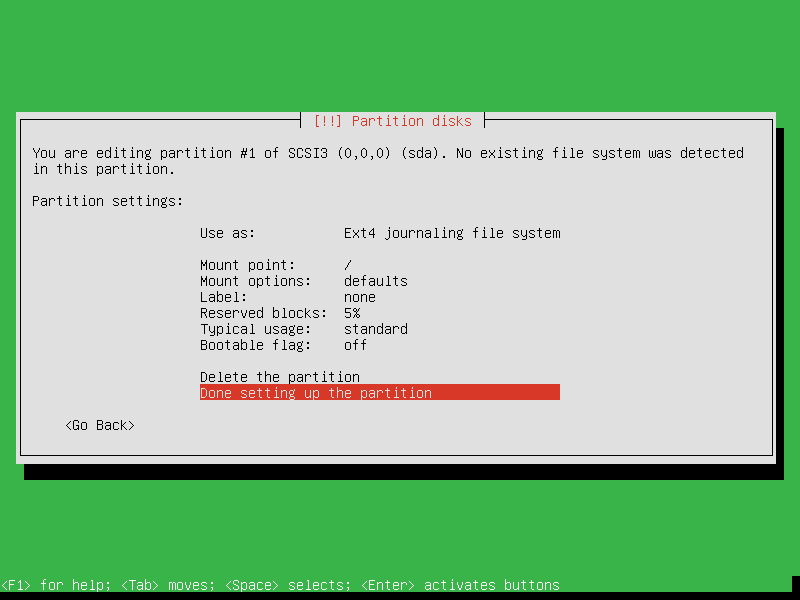
Repeat these steps for /home and swap partitions too. The final disk layout should look like this. On the next to warn dialog choose yes and hit Enter again.
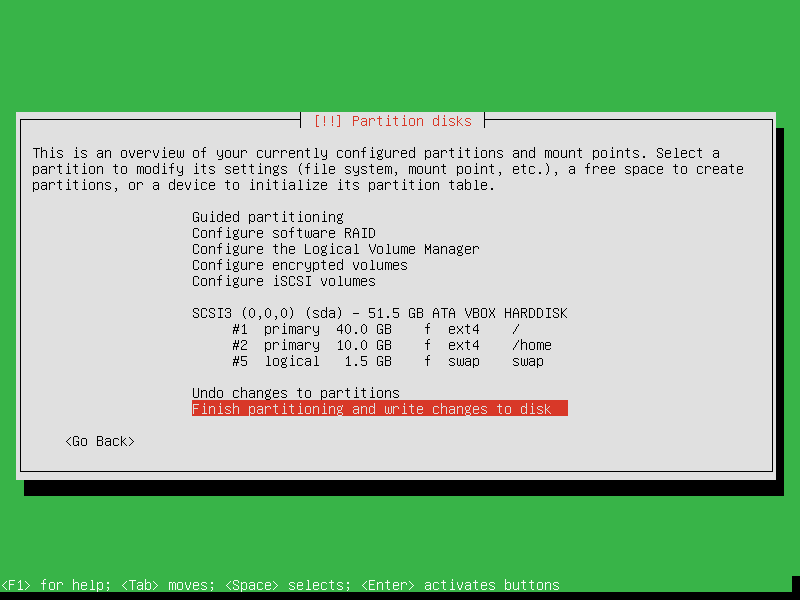
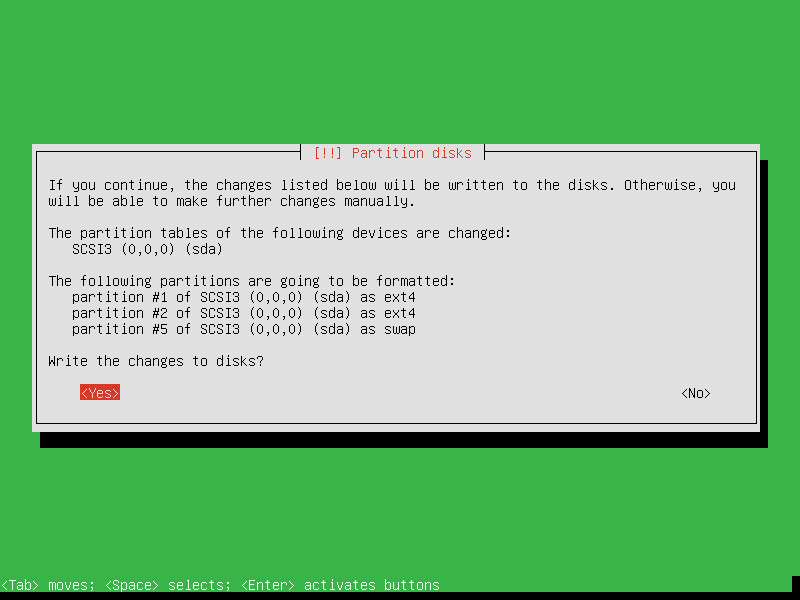
16. The next stage on the installer is asking if you want to set up a Graphical Environment for Zentyal. If your server has a monitor and a keyboard attached to it then you should probably choose No ( This will install an LXDE GUI ) else choose yes ( you will control your system remotely using a web admin interface and ssh ).
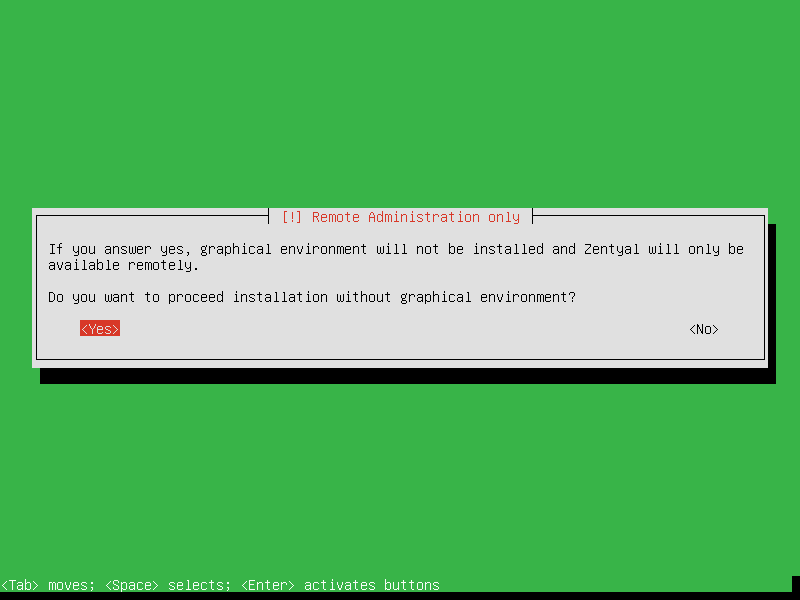
17. Next your system starts installing.
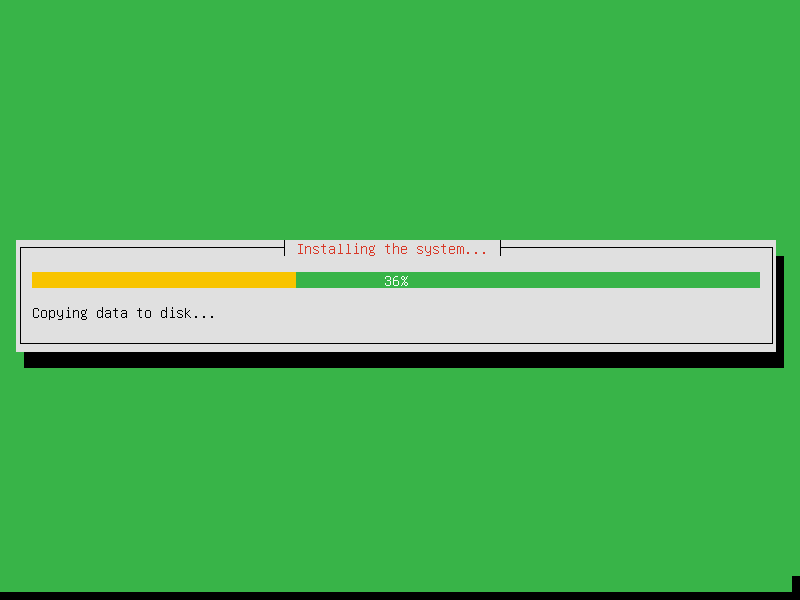
18. On the next dialog just hit enter ( if you are accessing the internet through a proxy you should enter it now).
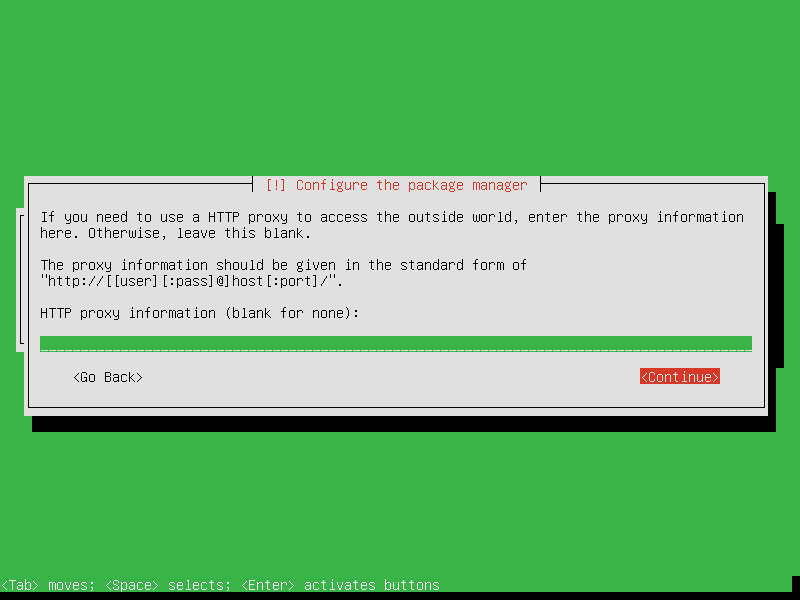
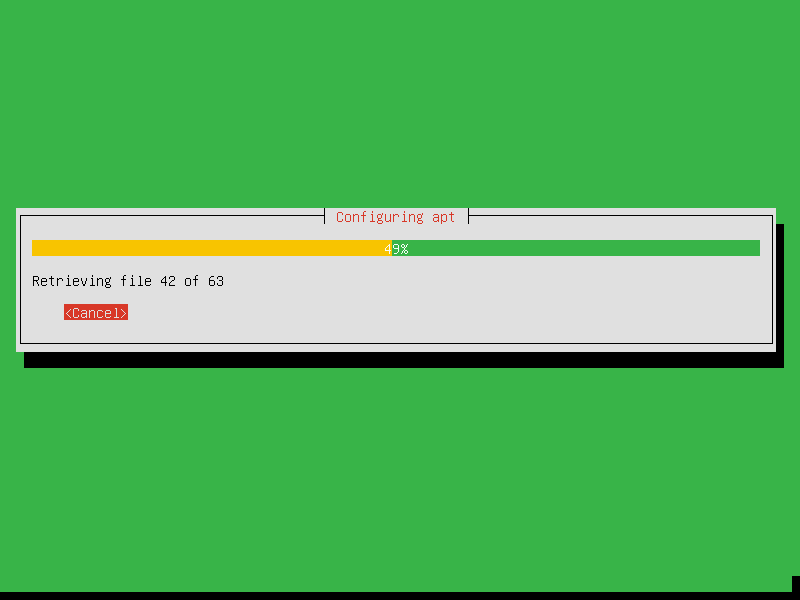
19. Choose Yes for installing Grub into MBR.
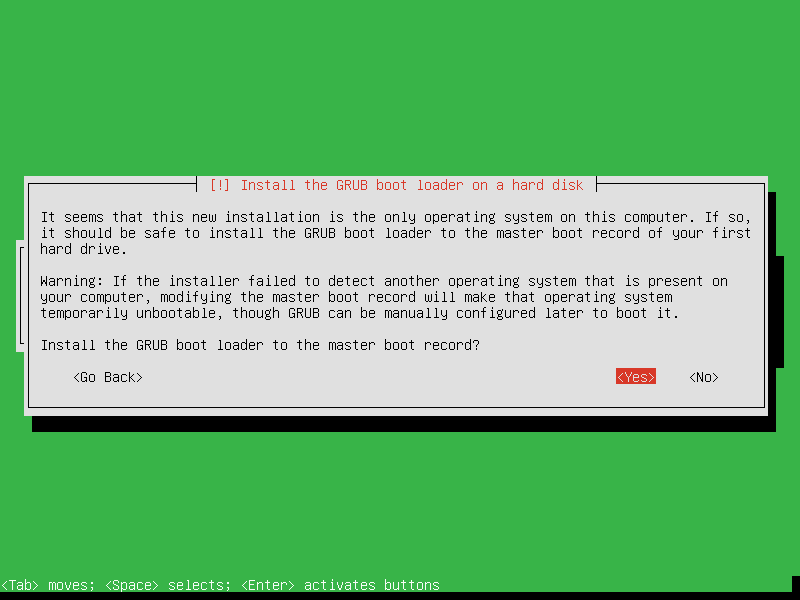
20. Next choose Yes for the next warning about UTC time.
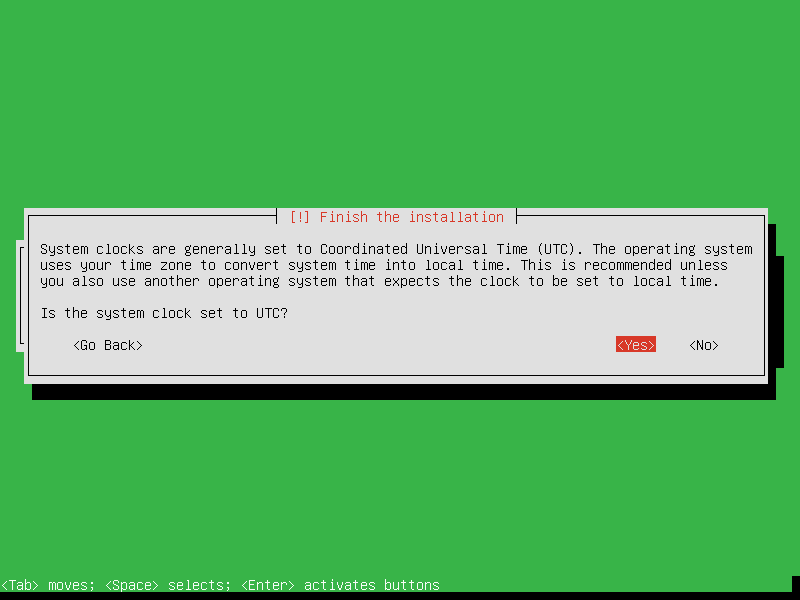
21. And we reached the finish line. Press enter to continue and the system will reboot.
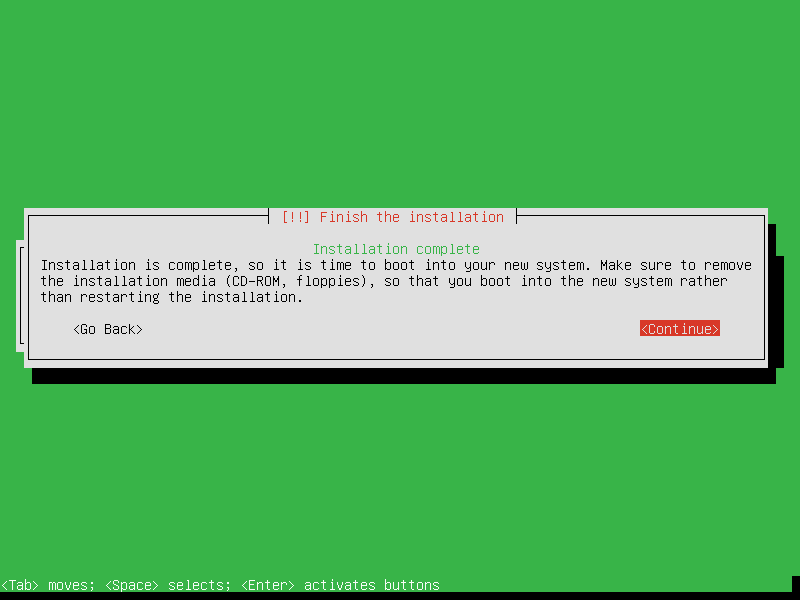
After rebooting the system will install some basic software and then it will prompt us for web IP administration.
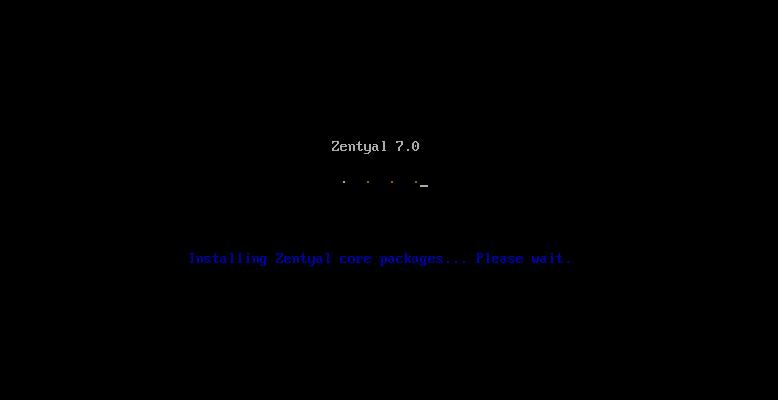
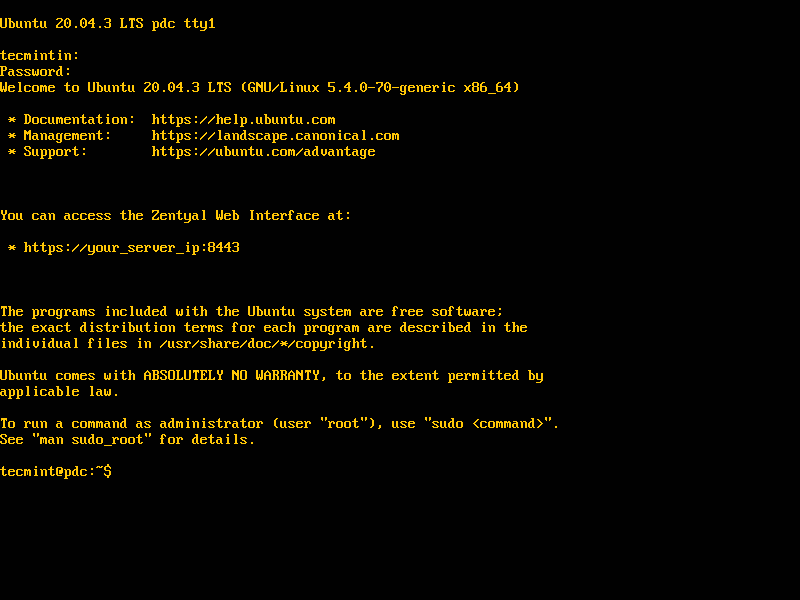
Step 2: Installing Basic Softwares for PDC
22. Now it’s time to go to heavy stuff – meaning accessing web remote administrating tool and installing the basic software for the server to become a complete Primary Domain Controller (PDC) with samba4.
- Next, open a web browser and type the address prompted in Zentyal ( for this example the web admin address is :
https://192.168.0.127:8443). - Next, the web browser will warn you about a security issue relating to the certificate.
23. Choose “Advanced” and then “Proceed” like in the screenshots below.
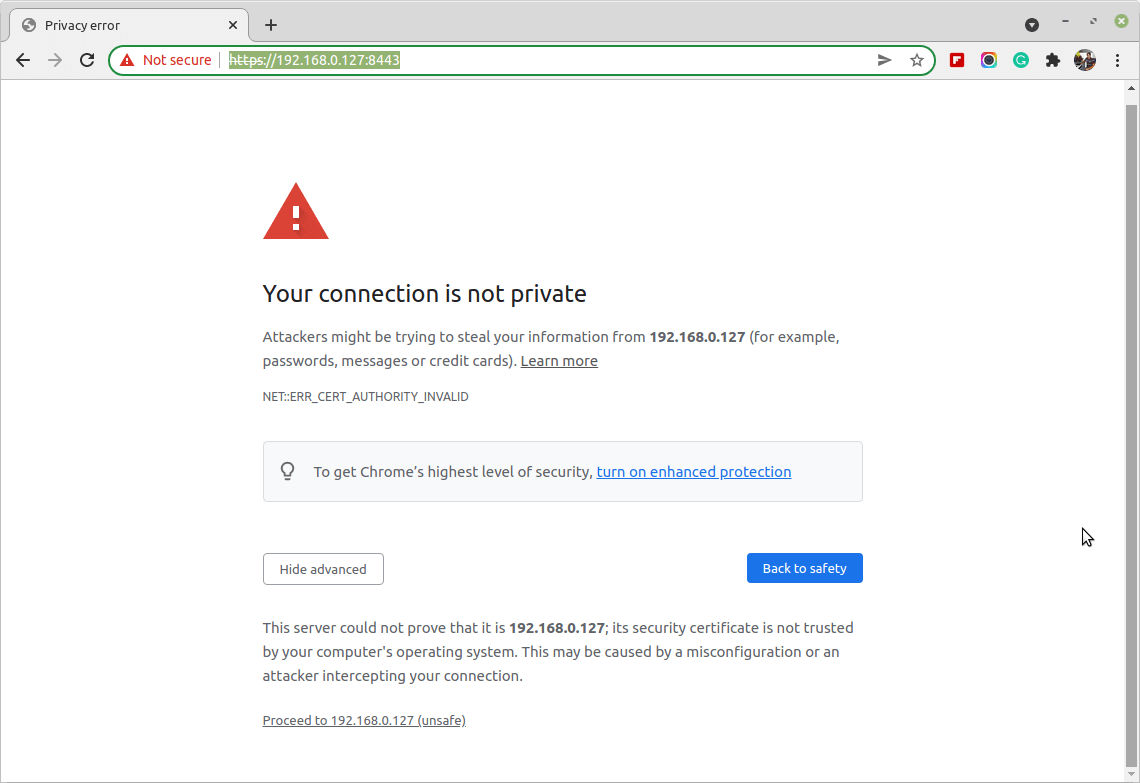
24. Then enter your user and password for the admin user ( the user-created on installation).
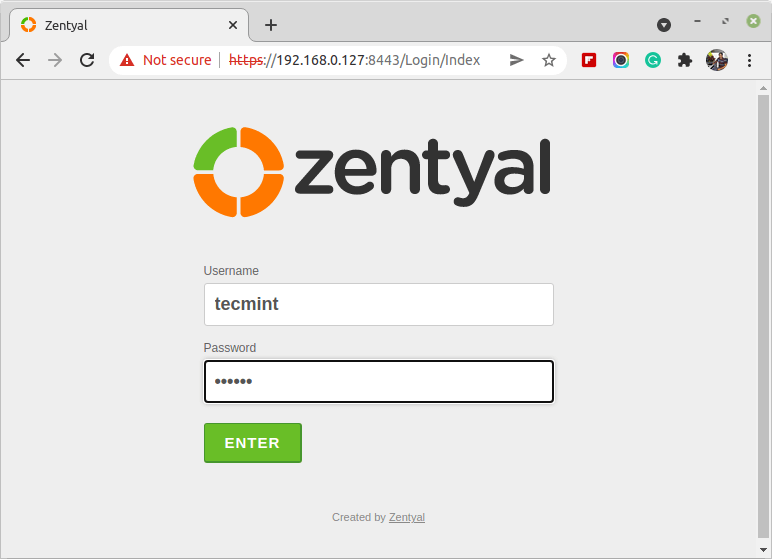
25. We are now presented with the Zentyal Web Administration and it’s time to choose and install software for our PDC from Software Management – Zentyal Components and choose the following packages (modules) for the server to become a Primary Domain Controller.
- DNS Service
- Domain Controller and File Sharing
- Firewall
- Network Configuration
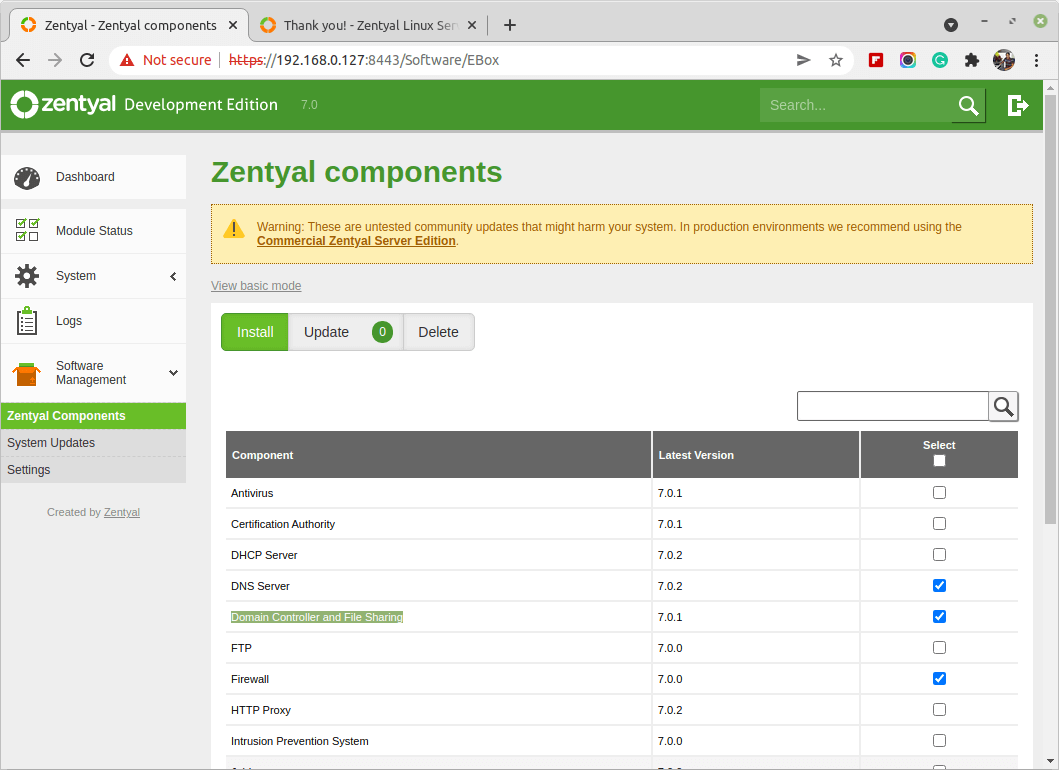
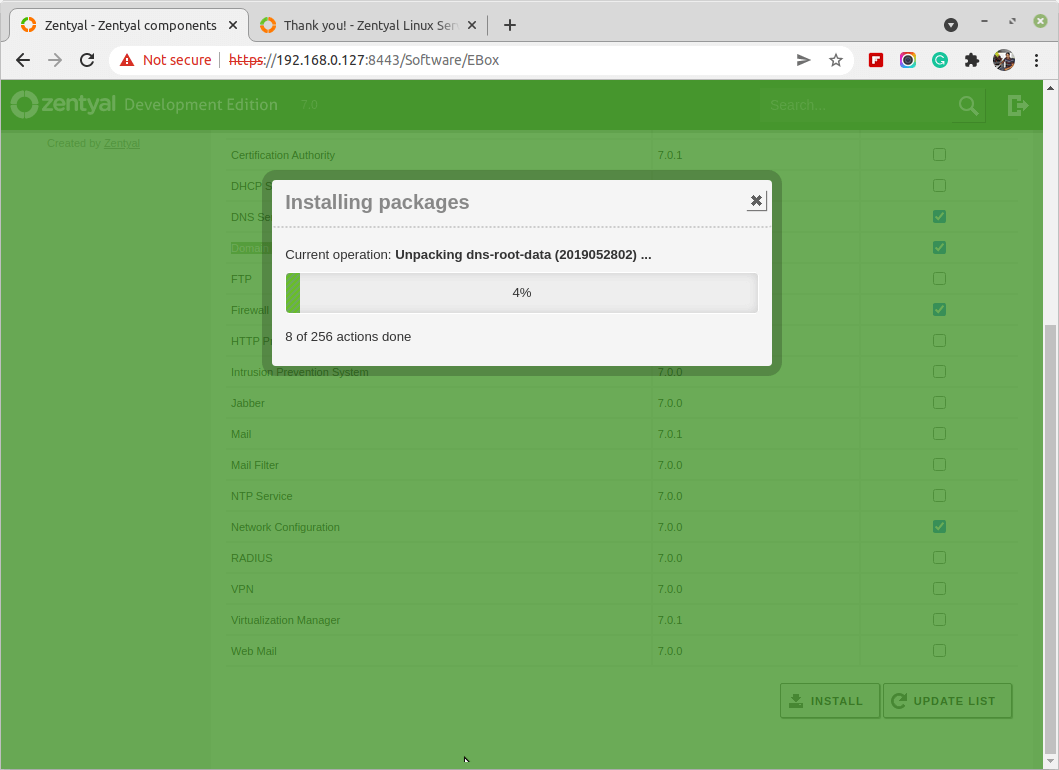
26. Next, go to the System – General and set the Hostname and Domain.
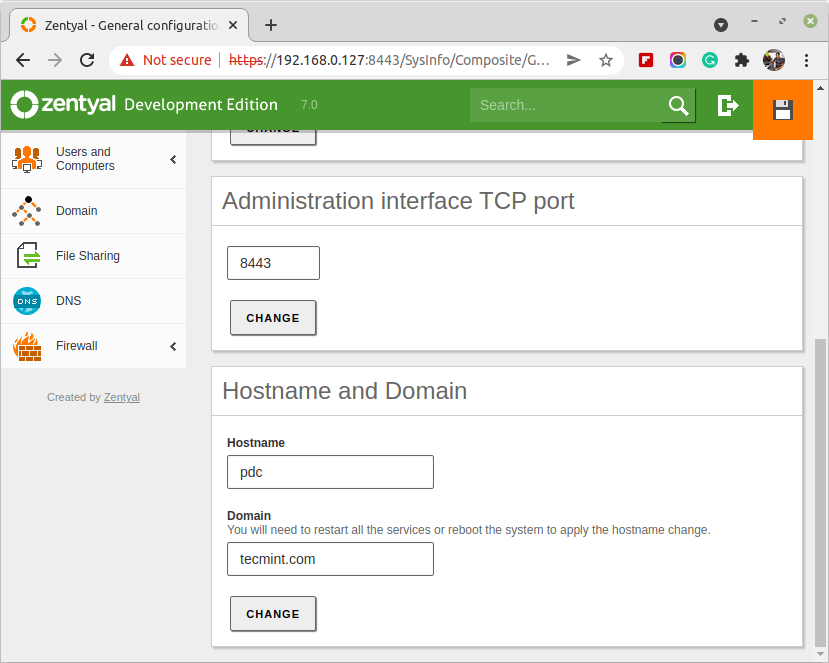
27. Now you should go to DNS Module and make sure that your domain is listed in the Domains tab.
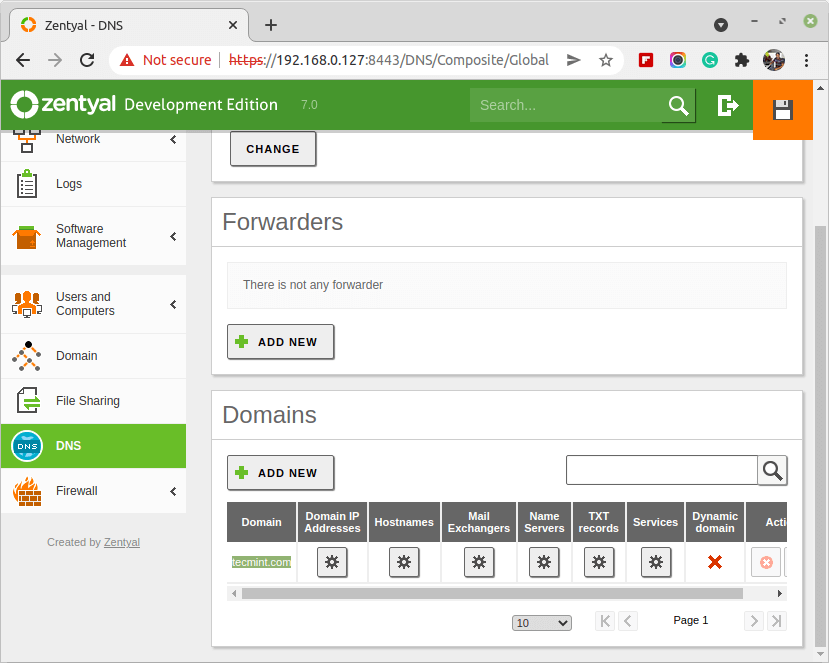
28. Then go to Users and Computers Module, select Manage and add a user with Administrator Privileges for Active Directory. Select Users, Click on the “+” button below, and enter your credentials.
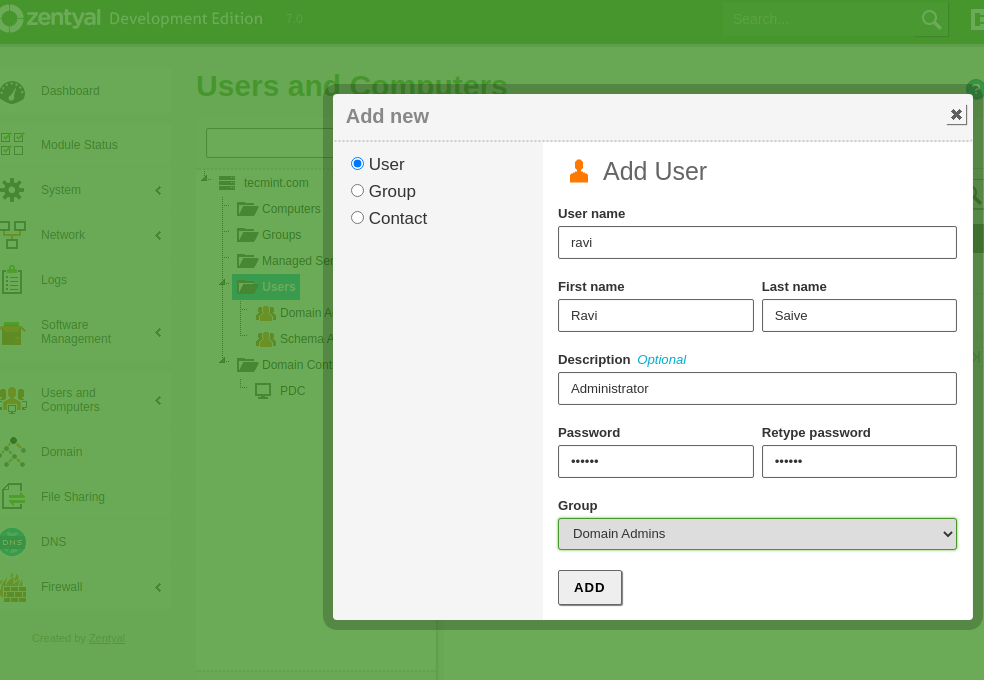
29. Now go to Domain Module, select Settings, choose a description for your server, select “Enable roaming profiles” and hit the Change button.

30. Now go top right and click on Save Changes for the system to apply your new settings and click Save.
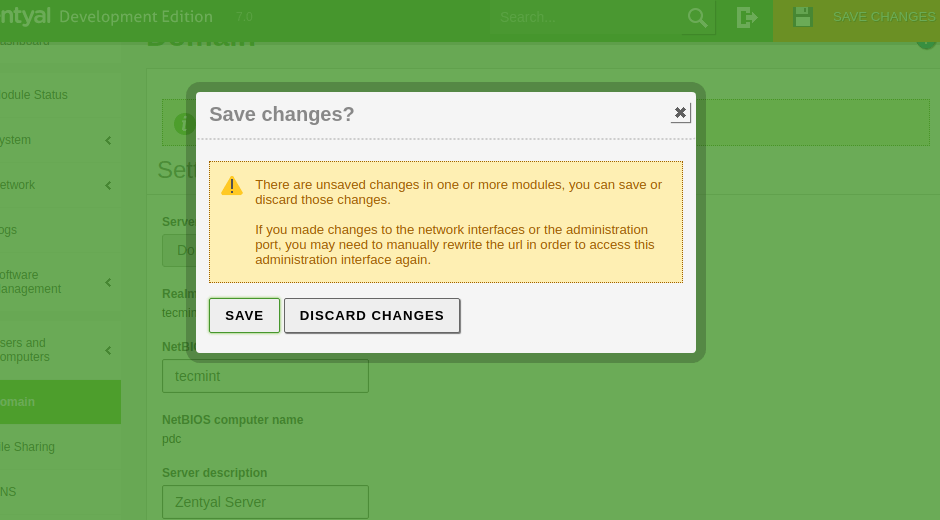
That’s it for now on the PDC server minimal configuration to become a Primary Domain Controller.
Step 3: Integrating a Windows System in PDC
It’s time to integrate a Windows-based system ( In this example a Windows 10 system) in the “tecmint.com” domain.
31. First let’s set up the network configuration for the system to be able to access the new domain. Go to Start -> Control Panel -> Network and Internet -> Network and Sharing Center -> View Network Status and Tasks -> Local Area Connection.
On Local Area Connection select Properties -> IPv4 -> and enter your static IP, netmask, gateway, and DNS like in the screenshots below.
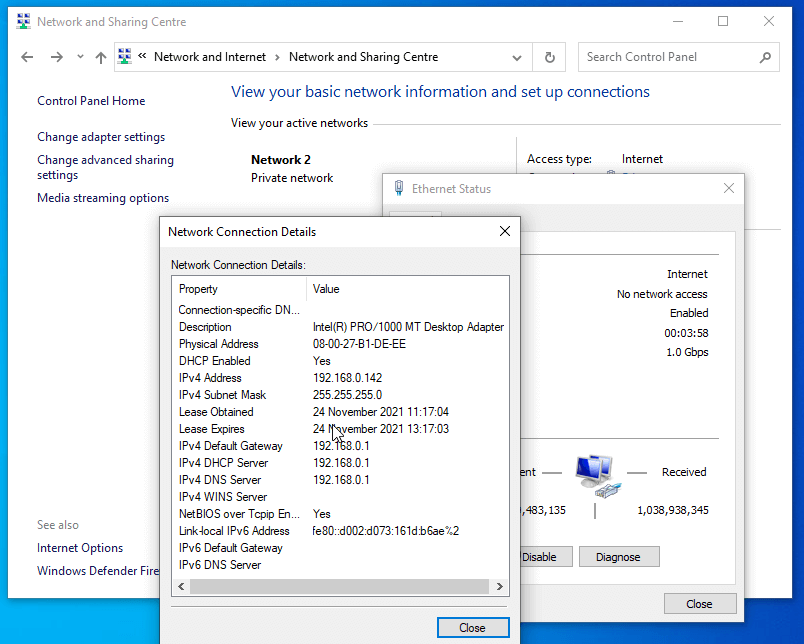
32. To be sure that everything is OK try first pinging your pdc server address and then ping the domain name.
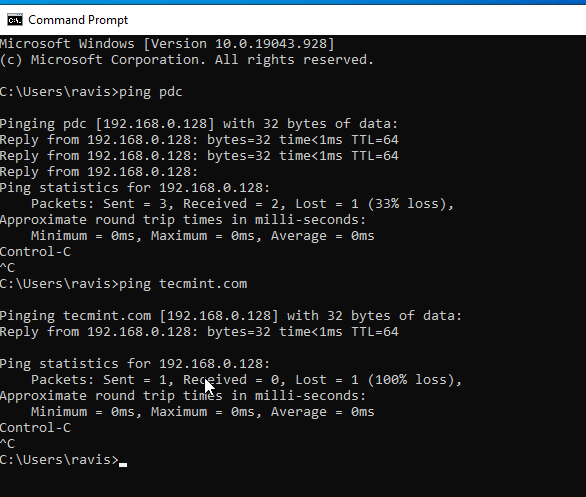
33. We now reach the end of this tutorial. Let’s finish the configuration by adding Windows 10 to the tecmint.com domain name. Click “Computer” -> System Properties -> Advanced System Settings -> Computer Name.
Enter your computer name in the Computer Name field domain in Member of Domain.
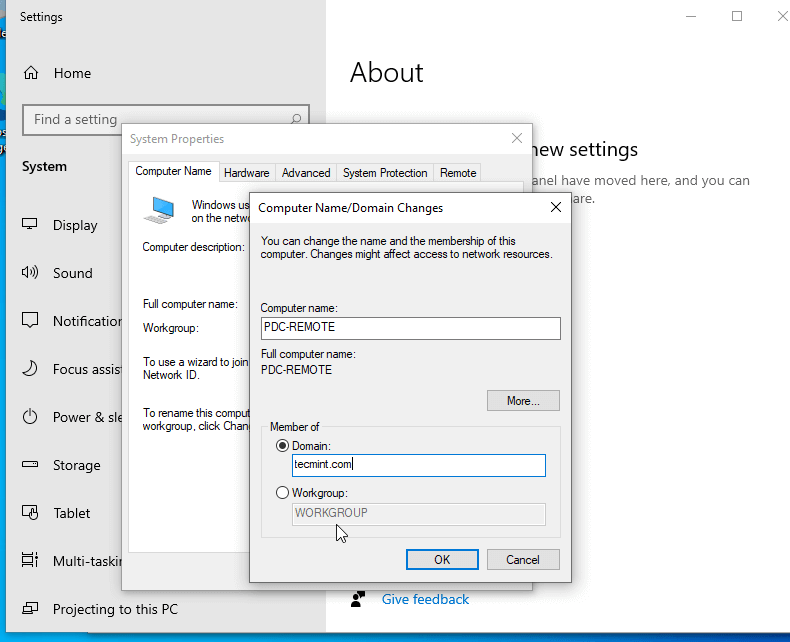
34. On the next prompt enter username and password for the Administrator User of your domain ( the user created in Users and Computer through Zentyal Web Interface).
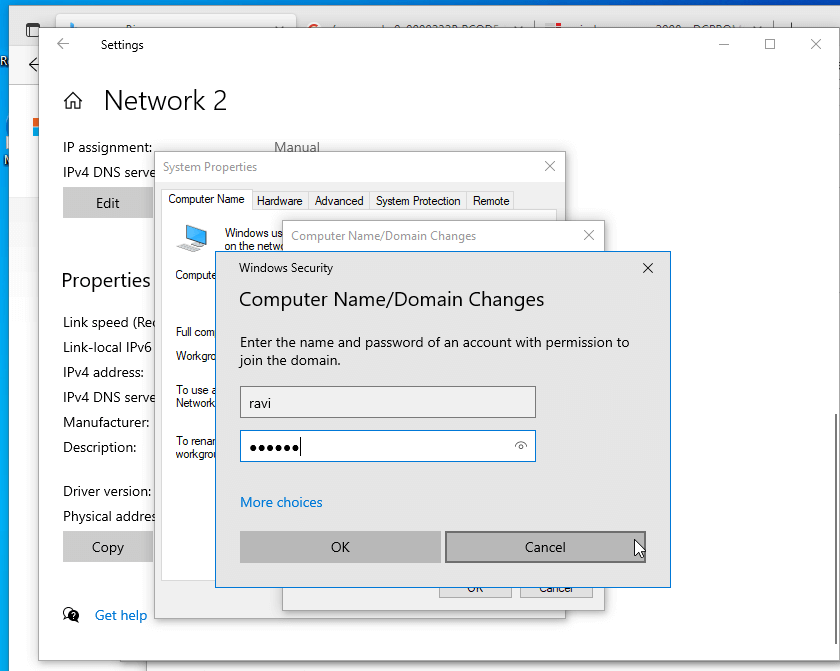
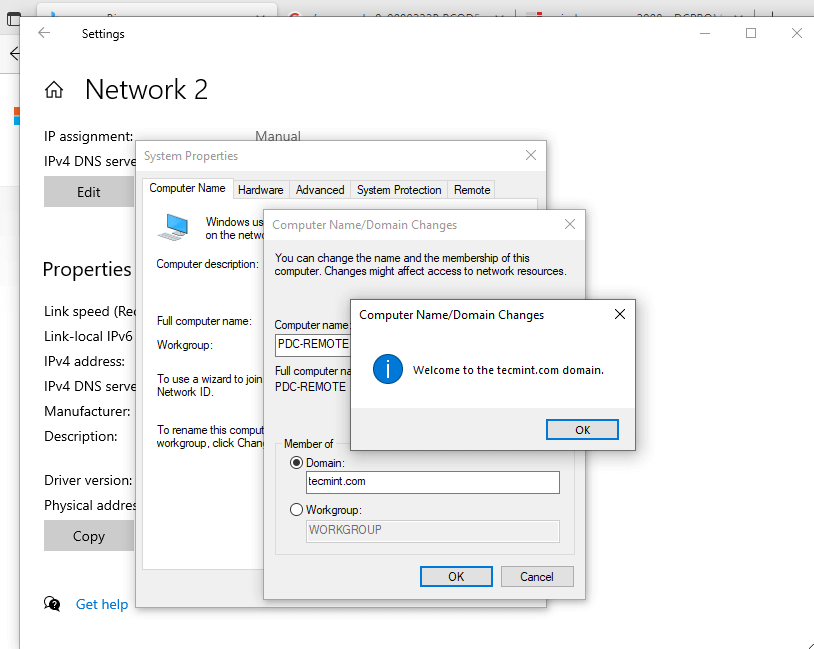
35. Next, restart your computer to apply changes and log on to your new domain.
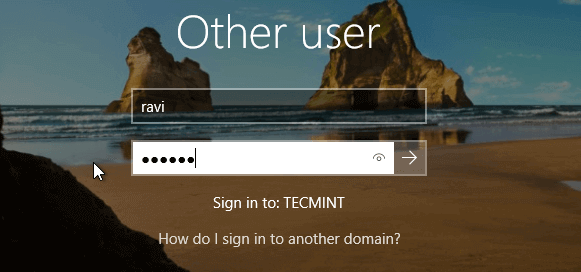
36. Navigate again to Zentyal Web Dashboard and check if the Computer has been added to Users and Computers.
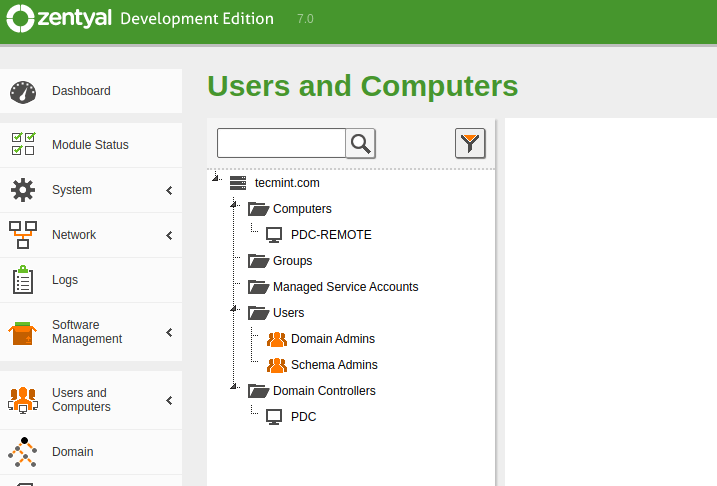
Congratulations! You now have a full domain service and you can easily add other windows based systems into your new domain.
The next tutorial will be on how to access your PDC server remotely from Windows-based systems, Create new Users and Groups, Create a Share, and set up Group Policy for this domain users and computers.


